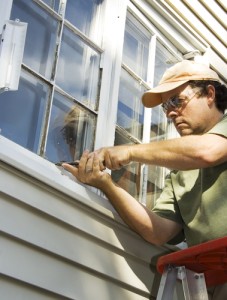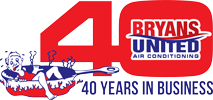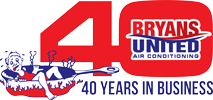 You’ll likely have a few weekends available this spring to catch up on chores around the house and yard. Why not spend that time taking care of things that will actually save you money? By completing some basic weatherization tasks, you can save money on energy expenses both this spring and year round. While you may need a professional to help with some of these steps, you can do most of them yourself.
You’ll likely have a few weekends available this spring to catch up on chores around the house and yard. Why not spend that time taking care of things that will actually save you money? By completing some basic weatherization tasks, you can save money on energy expenses both this spring and year round. While you may need a professional to help with some of these steps, you can do most of them yourself.
Windows and Doors
Your home is likely leaking air from its perimeter, especially its doors and windows. This means that warm air is exiting through holes and gaps in the winter and sneaking inside in the summer. Your furnace or A/C has to work harder when conditioned air is escaping.
Seal leaky windows by taking these steps:
- Use a caulking gun to spread caulk along the outside of window casings.
- Spread glazing along the edges of windowpanes, but beforehand, scrape off old glazing, remove any residue or dirt from the glass and place new glazing where glass meets the window frame.
- After firmly closing the window, string rope caulk along the area where the window opens and shuts.
- Install plastic window film either inside or outside the window if you don’t have storm or double-paned windows.
Next work on weatherizing doors that provide access to the outside. Peel off old weatherstripping, clean and dry the area, and apply new weatherstripping. A door sweep, either vinyl or rubber, should be installed at the bottom if you can see daylight.
As with windows, use caulk to seal stationary parts of doors if they have gaps. Weatherstripping should be applied to the inside of the door jamb, basically anywhere space exists between the door and the frame. On glass sliding doors, if the receiving fixture is recessed, you’ll probably have to apply weatherstripping to both the frame and the door.
Sealing Both Inside And Outside
Look for leaks on your home’s exterior. Likely locations for leaks include intersections between different building materials, especially where the foundation meets the walls, and any spot where holes have been drilled for wiring, pipes or vents. Leaks in windows and doors may be more evident from outside than inside. Check along the window frames. To seal, apply caulk for smaller holes and cracks and expanding spray foam for larger holes.
While you’re outside, climb up a ladder and take a look at the rain gutters. Or better yet, on a rainy day, look to see if any water is leaking from the gutters or the drainage pipes leading down and away from the house. Leaky roof drainage can allow rain and melted snow to seep into the foundation and eventually the basement. You may be able to repair leaks, though an experienced professional might be your best bet.
Next search for air leaks on the interior perimeter of your home. One easy but effective way is to walk along the interior holding a lighted smoke pencil or incense stick. If the smoke wavers, you probably have found an air leak. Caulk or weatherstripping should do the trick, depending on the type and size of leak.
Other Weatherization Tasks
While you can’t be expected to insulate your whole house, you might find that adding insulation in the attic is relatively easy. It may just be a matter of adding batts of fiberglass insulation on top of existing insulation. The attic is a prime spot for heat gain and loss, so insulating here is the quickest way to improve home energy efficiency. Likewise, air sealing between the attic and living spaces will pay significant dividends. Don’t forget to apply weatherstripping and insulation to the attic hatch.
The weatherization category doesn’t necessarily include your thermostat, but an upgrade here will result in meaningful energy savings. Ditch your old-style manual thermostat and get a programmable model. It will allow you to set energy-saving temperatures for when you’re away from home for the day or when you’re asleep. Then program it to warm up your home before you expect to arrive home or awaken.
While the aforementioned weatherization tips are do-it-yourself for the most part, in each case if you’re willing to engage a professional, such as with air sealing and insulating, you can reap even greater long-term savings.
Learn more on weatherization solutions from the experts at Bryans United Air Conditioning or contact us today at 504-208-2071.
Image Provided by Shutterstock.com

